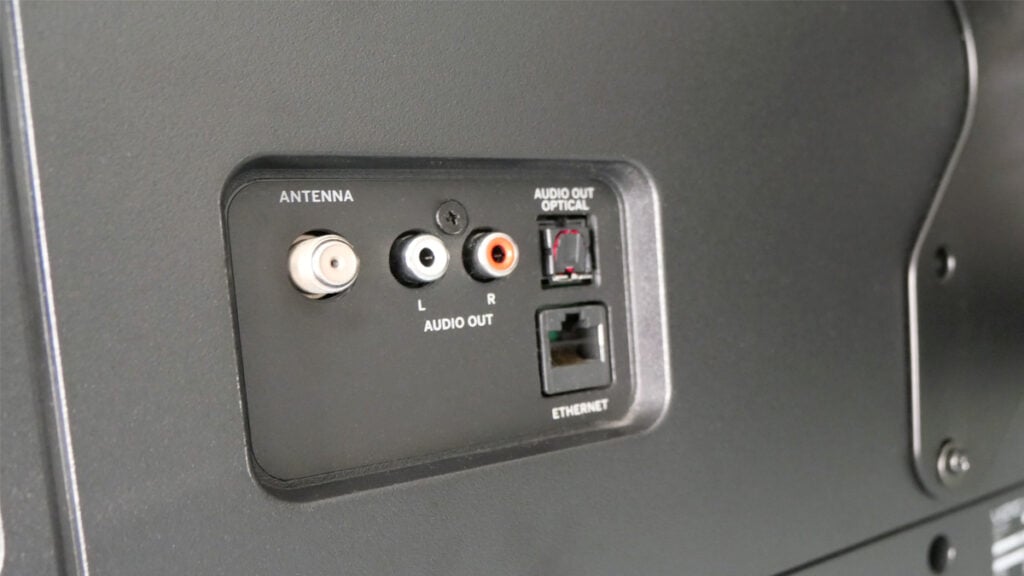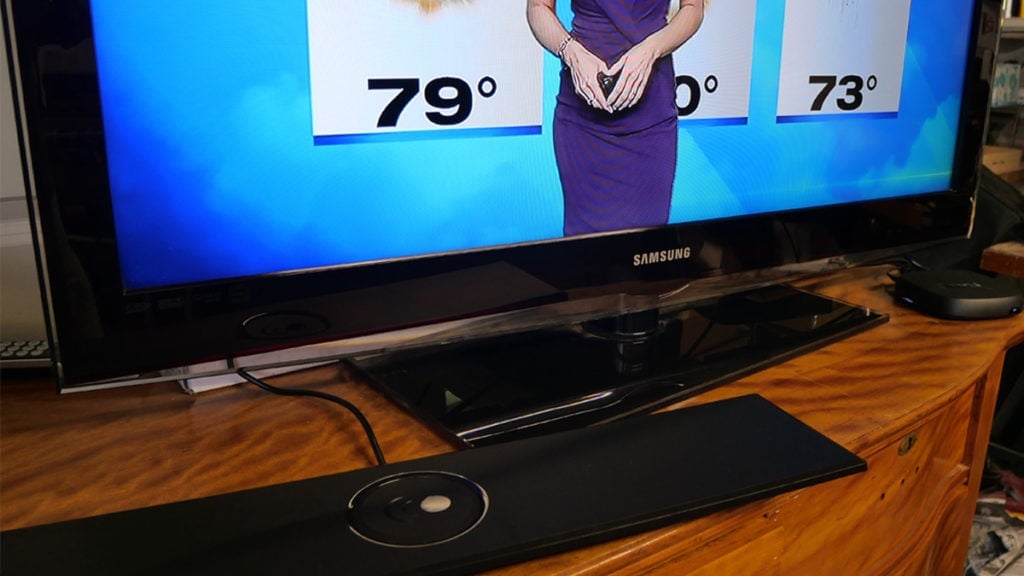Older or non-Smart TVs from brands like Vizio, LG, Sony, or Samsung can connect to a digital TV antenna.
Simply check behind your TV for a specific port to verify its compatibility. This F connector port, also used for cable boxes, enables antenna connections. Possessing this port indicates your TV includes an ATSC tuner, essential for receiving digital broadcasts.
How to Connect a TV antenna to an Old, Non-Smart TV
- Insert the coaxial cable line from your antenna into the TV’s F connector port.
- Access the settings menu on your TV. Navigate to the section managing inputs.
- Select ‘AirTV’ or ‘Over-the-air’ TV from the options and initiate a channel scan.
This setup process should complete in 5 to 15 minutes. For best results, position your antenna towards local broadcast towers.

Websites like rabbitears.info offer guidance on locating these towers. Similarly, Antennas Direct provides recommendations for optimal antenna types based on your location.
Make sure you’re within the signal range of your local stations to receive channels.
Find Available Channels with Your Digital Antenna
You can unlock a world of free television with a digital antenna connected to your non-smart TV. Most users in the U.S. can access a wide variety of local channels and subchannels broadcasted over the UHF and VHF bands.
Here’s a brief overview of what you might find:
- Major Networks: Enjoy top-quality content from the big four broadcasters – ABC, CBS, FOX, and NBC – available in most areas.
- Public Broadcasting: Channels like PBS, PBS World and PBS Kids offer educational programming, and you might also find local government or public access stations.
- Special Interest Channels: Networks such as The CW, MyNetworkTV, and independent stations provide a mix of entertainment, sports, and lifestyle programming.
- Multicast Networks: Discover niche content on multicast networks like MeTV, Antenna TV, GRIT, and Ion Television, offering classic movies, series, and more.
Remember, the exact channels you’ll receive depend on your location, antenna type, and its placement relative to local broadcast towers. Tools like rabbitears.info or the FCC’s DTV Reception Maps can help you pinpoint which channels are available in your area.
What if My TV Lacks an Antenna Port?
Watching free over-the-air channels is possible even without an F-type antenna port. If your device features an HDMI port, connecting a TV tuner or an OTA DVR like Tablo becomes an option. These devices often include one or more digital TV tuners for antenna connection.
Lacking an HDMI port, your TV might have ports for A/V cords. In such cases, an inexpensive digital TV converter box serves as a solution. This box provides an ATSC tuner for antenna hookup.

Digital Antenna and Non-Smart TV Compatibility FAQs
Which TV Stations are available with an Older TV?
Older TVs equipped with a digital tuner might be able to get major broadcast networks: ABC, CBS, FOX, and NBC. Beyond these, a range of local networks and sub-channels like PBS, MeTV, GRIT, and ionTV offer free content over the air.
Can I use a digital antenna with any model of non-smart TV?
Yes, most non-smart TVs, especially those made by popular brands like Vizio, LG, Sony, or Samsung, can connect to a digital antenna. The key is to ensure your TV has an F-type connector port for antenna hookup.
What are the steps to connect a digital antenna if my TV is very old?
For very old TVs, connect the digital antenna’s coax line to the F-type connector port. If your TV lacks this port, you may need a digital TV converter box that comes with an ATSC tuner for digital signal reception.
How can I improve digital antenna reception on my non-smart TV?
Improving reception involves positioning your antenna towards local broadcast towers, minimizing obstructions, and possibly using an amplifier. Websites like rabbitears.info can help identify optimal antenna placement.
Do I need a special kind of digital antenna for a non-smart TV?
No special antenna is required for non-smart TVs. The choice of antenna (indoor vs. outdoor, amplified vs. non-amplified) should be based on your location relative to broadcast towers and any physical obstructions.
Can a non-smart TV receive high-definition (HD) channels with a digital antenna?
Yes, if your non-smart TV has a digital tuner (ATSC 1.0), it can receive HD broadcasts over the air through a digital antenna. The availability of HD channels depends on local broadcast signals.
What if my non-smart TV doesn’t detect any channels with the digital antenna?
If no channels are detected, double-check the antenna connections, ensure it’s properly positioned towards broadcast towers, and rescan for channels. If issues persist, consider trying a different antenna or location.
Re-positioning an antenna and performing a new scan is common when you are trying to get the best TV signal reception.
How far should my non-smart TV be from the broadcast tower to use a digital antenna effectively?
Distance to broadcast towers influences signal strength. Ideally, your antenna should be within 30 to 60 miles of the towers for the best reception. Use tools like Antennas Direct for specific recommendations based on your address or ZIP code.
Are there any costs involved in using a digital antenna with my non-smart TV?
The primary cost is purchasing the digital antenna itself. There are no recurring fees for accessing over-the-air channels. However, investing in additional equipment like a signal amplifier or a digital TV converter box may be necessary depending on your setup.
Digital Antennas for Old TVs: 3 Tested Picks
Discover the best digital antennas for your non-smart TV. Whether you’re looking for an indoor antenna for tight spaces or a powerful outdoor antenna for maximum range, there are plenty of great models that work well:
- ClearStream FLEX: A powerful indoor antenna that is ideal for indoor use. The FLEX antenna receives clear, HD channels from local broadcasters. It’s a great fit for TV viewers in urban areas.
- Antop AT-800SBS HD Smart Panel Antenna: Designed for outdoor installation, this antenna offers exceptional range and durability with its weather-coated finish. It captures OTA signals even in rural locations.
- RCA Compact Outdoor Yagi HDTV antenna: A budget-minded, directional outdoor antenna that is great for targeting TV signals in faraway locations.
Upgrade your setup today and unlock free access to high-definition broadcasts with ease. Explore our recommendations and find the right digital antenna for your older or non-smart TV.
For more news on streaming, how-to guides and reviews, head over to the main page of The Cord Cutting Report or follow the CCR on Google News.